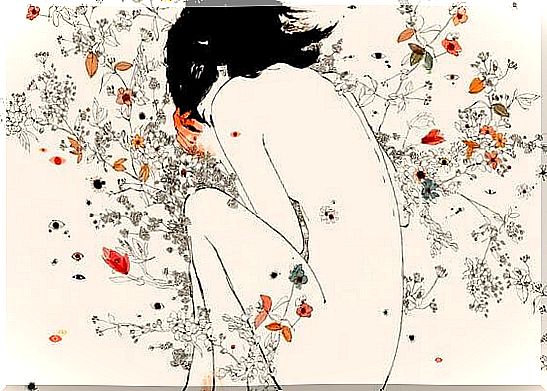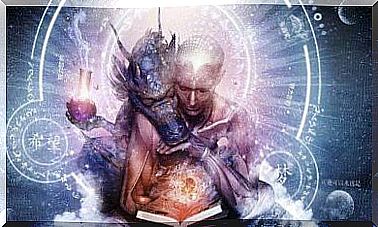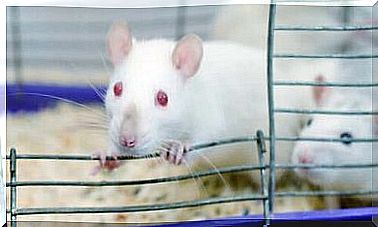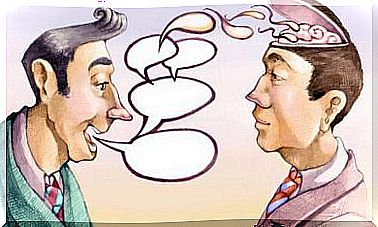When Pain Helps To Grow

When life is good, give thanks and celebrate. When it is sour, give thanks and grow. This is how Shauna Niequist captioned his book Agridulce (“Aigre-sweet”, in French). Recognition for everything that happens to us, both good and bad, is the basis of the search for wholeness, for true happiness. Even situations that hurt us deserve some recognition, since they are the basis of our intellectual, emotional and spiritual development.
In fact, pain and bitter experiences are powerful fertilizers for building our deep personal growth. A suffering from which one can begin transcendent changes to create a better version of oneself. It has a name and is called post-traumatic growth.
What is post-traumatic growth?
It was psychologists Richard G. Tedeschi and Lawrence G. Calhoun who, in the 1990s, did research on post-traumatic growth (PTGI, according to its acronym, Posttraumatic Growth Inventory ). The researchers found that 90% of people who experienced a traumatic event – and the pain that accompanied it – were exposed to at least one factor identified as post-traumatic growth.

This set of circumstances represent significant “opportunities” for a person’s coping resources and present great challenges in how to understand the world and deal with the pain of loss and grief that follows. These circumstances contribute to a deeply meaningful personal process of change.
Here are the five pillars of PTGI:
- The desire to be open to new opportunities that were not present or did not seem possible before.
- A greater sense of connection with others, generally reflected in an increase in empathy towards the suffering of others.
- A greater sense of self-sufficiency: if you have overcome this, you can overcome anything.
- An increase in gratitude for life in general and a esteem for things that were previously considered to be established forever.
- A deepening in a spiritual connection or purpose, which may include changing beliefs or redefining them.
Causes of post-traumatic growth from pain
Post-traumatic growth occurs as a result of attempts to adapt to highly negative environments which can generate high levels of psychological anxiety. Realities, like great personal crises, which, in the first place, normally generate unpleasant psychological reactions.
Growth is not produced as a direct consequence of the trauma but of the struggle that the individual maintains with the new reality, marked by the after-effects of the trauma. Sequelae which are crucial in determining the degree produced in post-traumatic growth.
There are factors that can be indicative of post-traumatic growth and that are associated with adaptive growth after exposure to trauma. Thus, spirituality has been shown to be highly related to post-traumatic growth. Indeed, many of the most deeply spiritual beliefs are a result of exposure to trauma.
Social support has been shown to be a shock absorber for mental illness and the stress response. With respect to post-traumatic growth, there is not only a high level of social support prior to growth-related exposure, but there is also neurobiological evidence that reinforces the idea that social support will modulate a possible pathological response to stress.
It has also been found that in post-traumatic growth, the ability to accept situations that cannot be changed is crucial for coping. We have come to the conclusion that an agreement with reality is a significant predictor of post-traumatic growth.

Get rid of the idea of the superhero that is in us
We all know stories of people who were stronger and who discovered a deeper meaning in their existence after a great tragedy. In fact, it is also the material on which the great heroes are built, whether they are real or fictitious.
For example, if we made a list of fictional superheroes, we would put all Superman, Batman, or Spiderman on it. Batman and Spiderman, like so many others, lead a real crusade against crime when their loved ones are murdered. Superman also saw many other tragedies but let’s talk about the actor who played him at the beginning.
Christopher Reeve, the actor who originally played Superman in the movies, became quadriplegic following a horseback riding accident, a tragedy that led him to consider suicide. But that’s when Reeve demonstrated his true side of Superman because with the same determination as his fictional character, he became one of the people who most defended and fought for people who suffered from pain injuries. spinal cord.
This is just one example : serious limitation, serious illness, or profound loss can lead to an inner revolution. This pain-laden earthquake is the tragic circumstance that makes us ‘throw all the furniture out of our head’, so that with this new life experience, we put it away in a much more logical way.









